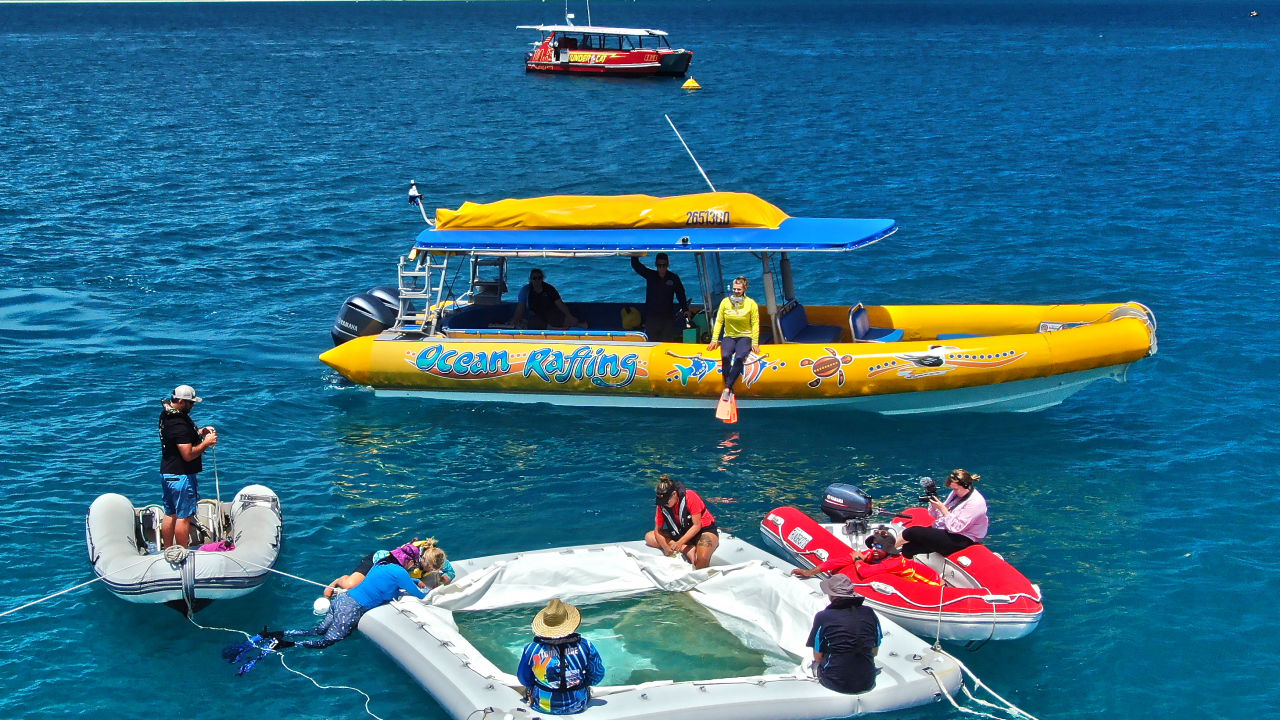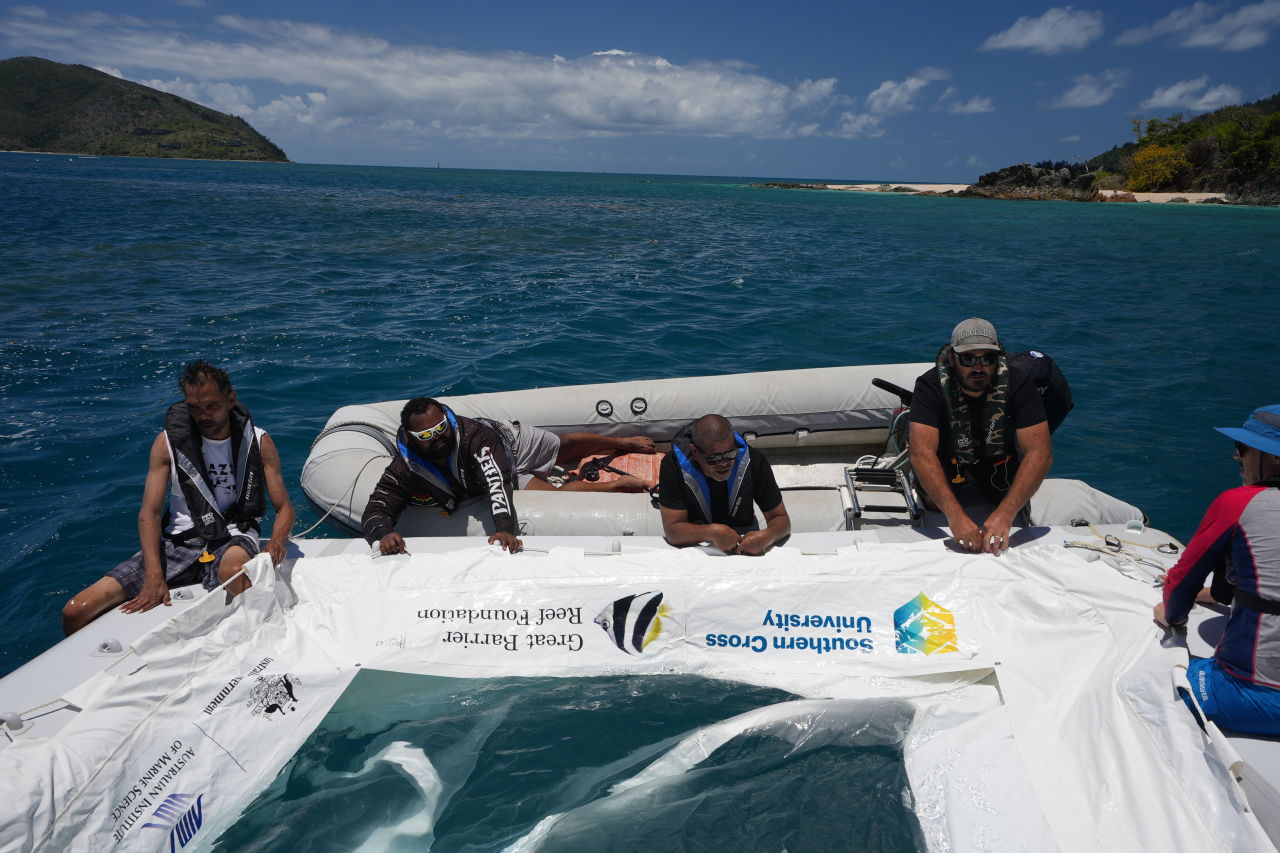News ·
Tourism operators key to large-scale coral restoration

Large areas of damaged coral reefs across the length of our Great Barrier Reef could soon be restored thanks to a unique partnership between scientists and tourism operators.
Last month, Whitsundays tourism operators joined researchers on the Reef for the annual coral spawning event, when corals released trillions of eggs and sperm into the water in a mass breeding phenomenon.
They learned how to collect the spawn and grow millions of baby corals in special floating nurseries, then helped deploy millions of these babies onto local damaged reefs to restore and repopulate them.
Coral restoration efforts have so far only been conducted by researchers on a small scale. Giving hundreds of tourism operators the skills to carry out this innovative technique, dubbed Coral IVF, is key to restoring large areas of damaged coral reefs.

Tourism operators deploying coral babies onto a damaged reef
Great Barrier Reef Foundation Managing Director Anna Marsden says tourism operators worked hand-in-hand with scientists to collect the spawn using specially-designed larval pools that are small enough to be deployed from their boats.
“This is a critical next step in reaching kilometre-scale coral restoration by working with the hundreds of tourism operators and citizen scientists who are passionate about helping save our Reef,” she says.
“Right in the heart of the Great Barrier Reef, the Whitsundays is a critical sanctuary for the Reef’s diverse marine life. However, like the rest of the Great Barrier Reef, it’s also an area that needs our help to recover from the effects of climate change such as coral bleaching and increasingly severe cyclones.
“Innovations like Coral IVF bring us hope for the future of the Reef, but we were previously only able to do it on a small scale.
“Through our Reef Islands Initiative, researchers have been upskilling local tourism operators to ignite a local reef restoration movement that is grounded in science and is scalable.”

A specially designed larval pool that is used as a floating nursery
This trial is part of the Great Barrier Reef Foundation’s Reef Islands Initiative, the largest reef island habitat rehabilitation project of its kind in the Southern Hemisphere. The Initiative is supported by funding from Lendlease, the Australian Government’s Reef Trust, the Queensland Government and the Fitzgerald Family Foundation.




